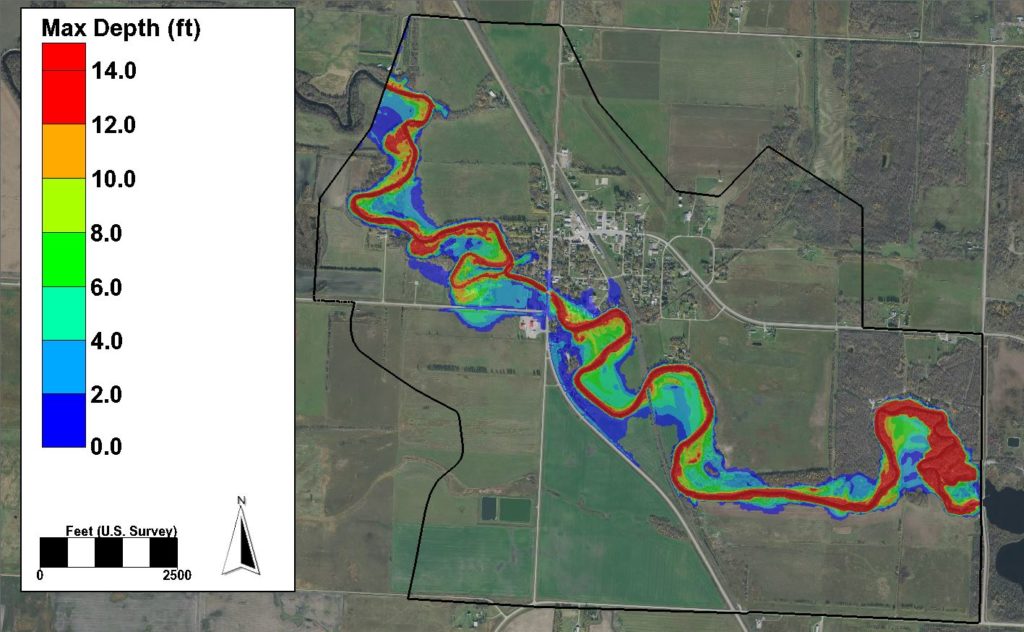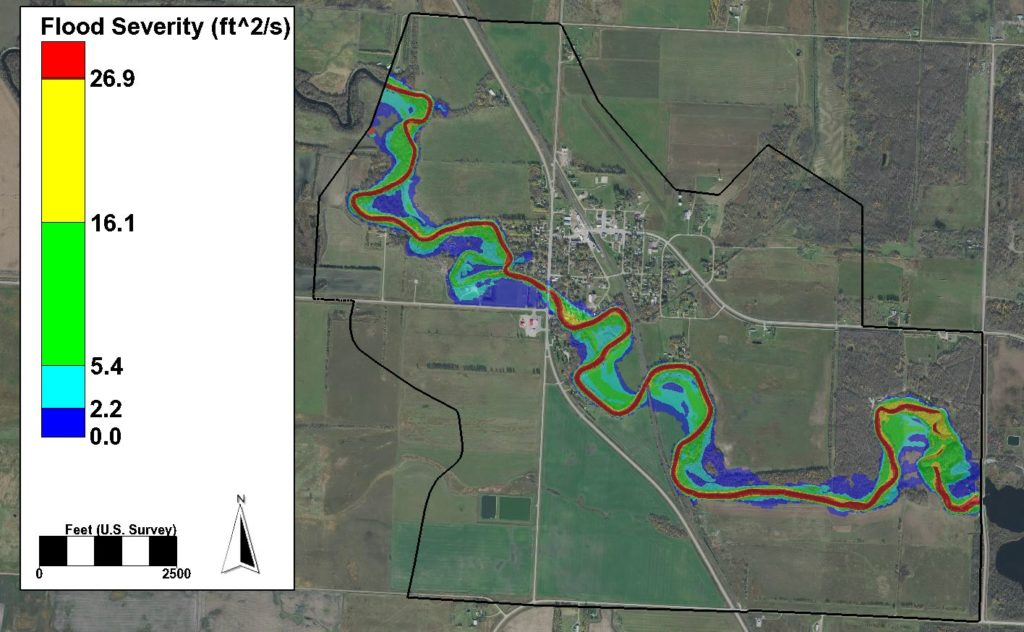Common Sense Keeps Dam Break Models in Line

 By Ellen Faulkner, PE
By Ellen Faulkner, PE
Dam safety studies often involve the use of numerical models to assess the flooding that could occur from a theoretical failure of the dam. These models provide useful information, but also abundant opportunity for frustration, excessive analysis costs, and misleading results. In my 30 years of working with the HEC-RAS model and other unsteady-flow model applications for dam break studies, I’ve learned a few things about making, recognizing, and correcting model malfunctions and errors. The biggest take-away? Most of these problems could have been avoided, or at least discovered early, by realizing one main concept: You are smarter than your model!
Start with Common Sense: Basics Matter
The biggest difference between a numerical dam break analysis and the type of calculations that generations of engineering students made by hand (or by cumbersome home-made computer routines) is the sheer number of calculations. Numerical models calculate and recalculate over untold numbers of time steps, spatial increments, and iterations. Still, at the heart of these calculations are familiar hydraulic concepts. Even when performing a two-dimensional analysis, you can gain important insights into your model by recalling classic equations involving steady, uniform, one-dimensional flow.
Normal Depth
Calculated using Manning’s equation, normal depth is a good first-cut estimate at the depth for a given discharge at a given section. If the model gives a very different depth, there should be a readily recognizable reason, such as a drawdown or a backup from downstream.
Critical Depth
Critical depth – the flow depth below which conditions at a given location cannot possibly affect conditions upstream – depends only on the discharge and the channel shape. Factors such as slope, roughness, and what is upstream or downstream do not affect critical depth; they affect where the actual water surface is relative to that critical depth. Remembering this distinction is helpful when trying to troubleshoot through critical or near-critical flow.
Computed Energy Grade Elevations
Computed energy grade elevations are at least as informative as the water surface elevations. The energy elevation is always above the water surface; if it touches the water surface, the model has computed a zero velocity for that location. Unlike the water surface profile, which can exhibit brief stretches of adverse slope, the energy grade line always decreases in the direction of flow. When it does not, the model is simply not working.
Weir Equation
Familiar to all water resources engineers, the weir equation is what the model uses to compute flow through a dam breach. The model calculations are also affected by factors such as an irregularly shaped breach, the drawdown during the time of formation, and tailwater submergence. Still, a manual weir flow calculation using the starting reservoir elevation and a rectangular approximation of the breach gives a good initial estimate of the peak breach outflow. If the model produces a number that differs significantly from this benchmark, the modeler should insist on understanding why.
Know What to Expect … and Trust Yourself
 What you could figure out with no model is probably generally correct, if imprecise. There are a number of basic “rules of thumb” and common-sense principles that can help frame your expectations. In addition to those discussed above, consider the following:
What you could figure out with no model is probably generally correct, if imprecise. There are a number of basic “rules of thumb” and common-sense principles that can help frame your expectations. In addition to those discussed above, consider the following:
- As the dam break flood hydrograph moves downstream, its peak should decrease, and its shape should flatten, unless there are other contributions to flow in the channel. The degree to which this happens depends on the initial steepness of the hydrograph and its volume, relative to the storage volume available in the downstream valley.
- Sustained supercritical flow is unlikely in a natural stream, as are very high velocities. Depending on the type of stream, a computed velocity over 10 to 15 feet per second warrants a second look. Any velocity anomalies that are not explainable by channel geometry should also be re-checked.
- The flood wave velocity is not the same as the flow velocity. The front of the flood wave will generally arrive at a downstream location faster than would be estimated using the distance and the computed flow velocity.
- Even for a dam break situation, irregularities in the hydrograph or the flood profile (such as double peaks, adverse slopes, or sudden changes in water surface slope) are red flags. So is too much regularity, as in a hydrograph or water surface profile that suddenly becomes flat.
- Formal calibration data (such as measured river flows and stages) may be lacking, but there is always something that serves as a “reality check.” For example, the normal tailwater elevation at the dam (matching common flow conditions) is usually known or observable. Well-traveled highway bridges are not likely to be overtopped during small floods. Non-flood flows should stay with the banks. Literature on stream formation tells us the bankfull flow is likely to have around a 50 percent annual recurrence probability (the “two year flood”); if the model is fitting the 10% probability flood inside the banks, there may be a problem.
- Given the widespread availability of aerial imagery, there is no reason not to know how wide the river is at normal flow, where there are rapids or sluggish vegetated reaches, or how much a bridge constricts flow. (This was true even in the days of paper topo maps, but the aerial images are updated much more frequently than the topo maps were.)
In reporting results as well as in developing, running, and checking the model, it is often too easy to let the model call the shots – particularly when it has been a long and frustrating battle to get any results at all. Perhaps the best antidote is to ask oneself if the results, as reported, could be confidently explained to the average homeowner, village board, or 13-year old. If the answer is no, we can do better.
Ellen Faulkner has more than 30 years of experience in developing and executing studies in watershed hydrology and river hydraulics, with an emphasis on floods and dam safety. She completes floodplain and dam safety analyses for communities and dam owners. Ellen has performed studies at hydro projects nationwide; developed and performed technical analyses in support of hydropower license applications; and developed and presented training seminars in watershed and dam break modeling for the Association of State Dam Safety Officials.

Post a comment: